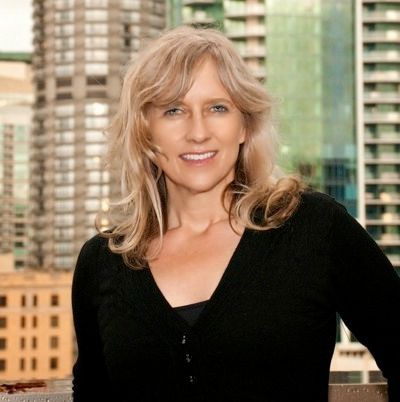
These are tumultuous times for hospice counselors as we guide the dying to their next stop. An ever-increasing number of Americans – nearly one in four – have left organized religion behind. When these folks enter the rough and unfamiliar waters of end of life, a special kind of attention is required.
The day I first met my hospice patient I’ll call Lavelle at his home, he greeted me in a bit of a panic. Opening the door, he hobbled back to a worn chair in his book-filled room, his face dripping with sweat. He was breathing like someone who had just completed a 100-yard dash.
“You gotta help me, “ he panted.
I placed a calming hand on his shoulder and waited until his breath matched mine. “Look at all these books,” he implored, sweeping his arm across a political spectrum from Buckley to Obama. He paused, taking a deep breath. “I’m an idea man. I’m a goddamned atheist. These books…they’re no help to me now.”
I meet a lot of patients like Lavelle these days. Lavelle was casting about in ways I’d seen before, urgently seeking a meaning to life, maybe a glimpse of an afterlife and a way to get there with ease. It’s a delicate situation for me. Anything resembling proselytizing can be an immediate turn-off. Yet doing nothing, taking an attitude of complete non-interference, feels like abdication.
A wise hospice chaplain once advised me: “Every home has an altar, visible or invisible. You just have to be perceptive enough, and present enough to locate it.”
“The hospice nurse will take care of your medical needs,” I told Lavelle. “My job is to tend to your heart and soul.” He immediately identified fear of dying as his greatest worry. He didn’t want to see the hospice chaplain – too close to religion for him. Was there anything I could do?
Lavelle was losing altitude quickly. I taught him a breathing exercise called Four-Square Breathing, breath work in 5-second increments around an imaginary square. Inhale for five seconds, hold for five seconds, exhale for five, and pause for five. Repeat for at least ten minutes. Lavelle relaxed, his eyes softened.
“You know,” I offered gently, “you’re going somewhere we’re all headed. It’s tough to feel like the lead horse in this race.”
He nodded.
“If you can open to the notion that there may be another force at play here,” I suggested quietly, “you might happen on to something helpful.”
On my next visit, Lavelle motioned for me to sit next to him on the couch. I studied his face. Some of the tension had subsided; his face had a subtle glow.
“I have to tell you something,” he whispered, although it was only the two of us. “I can’t tell anyone else. They might think I’m, you know…” He made a circular gesture next to his temple.
“A couple of days ago, I get up, I’m making my coffee. Takes a long time, I have to stop and take breaks. Then I notice,” he continued. “Out of the corner of my eye, there’s an angel. On my shoulder.”
“Wow,” I said, although I wasn’t that surprised. Eleventh hour awakenings happened fairly often in hospice.
“And on my other shoulder, another angel, right out of the corner of my eye.”
Lavelle smiled with amazement. “I can feel them with me now, all the time.”
“So the force is with you,” I said, smiling. “That’s a beautiful thing.”
“Yes, I’m not afraid anymore!” he exclaimed.
I was relieved that Lavelle had managed to summon this grace. Like a muse, grace cannot be orchestrated, but is more likely to arrive with a subtle invitation. In this emerging terrain of free-range spirituality, I believe all of us – not just hospice workers – can find ways to tune in to our essential nature and offer not just company, but presence to loved ones at end of life.
How do we do this? We can’t force or will a breakthrough or revelation, but we can prepare the soil: Slow down. Take a walk before you spend time together. Do a breathing exercise like the Four Square Breathing for ten minutes. Turn off the television, stash the computer and cell phone away. If possible, don’t multi-task, offer your undivided attention. Look for the invisible altar: What does this person cherish most? It could be a loved one, a favorite destination, a hobby, their life’s work, even an idea. Share a memory. Find a poem or reading to share. Play a musical instrument. Sing. Sit in silence. Something will emerge.
Before embarking on my hospice visits, I often take a short walk in nature to center myself. Sometimes before meeting a patient, I’ll meditate for a few moments, or say silently to myself: Let me find ways to give what they most need today. When joining a patient and their family for the first time, I listen, take in surroundings, feel the moods around me. Only when I have a sense of the situation do I ask any questions: “Tell me where this began for you?” “What is your biggest worry right now?” “Where are you drawing your strength?” “Do you want to talk about what’s ahead or do you want to take each day as it comes?” “How can we make today the best that it can be?”
Lavelle died peacefully several weeks later, his wish fulfilled.
His atheism, he had confessed to me, wasn’t so much a belief as a reaction to people telling him what to think or do in matters of spirit. In retrospect, I believe Lavelle’s altar was his openness to new ideas and forms, including the angels who arrived to perch on his shoulders. At end of life, we may feel like the world is falling apart, when actually we are opening to something larger and wondrous.
Susan James, MSW, LICSW, is a journalist and longtime hospice counselor with a forthcoming memoir chronicling a decade in hospice care. She also facilitates experiential workshops on learning how to face death with grace. She can be contacted at susanjamesauthor.com.
